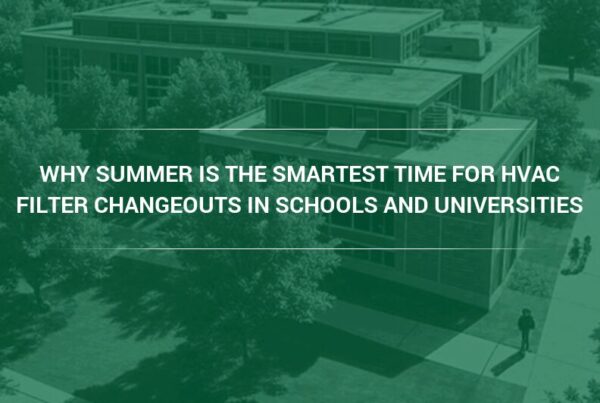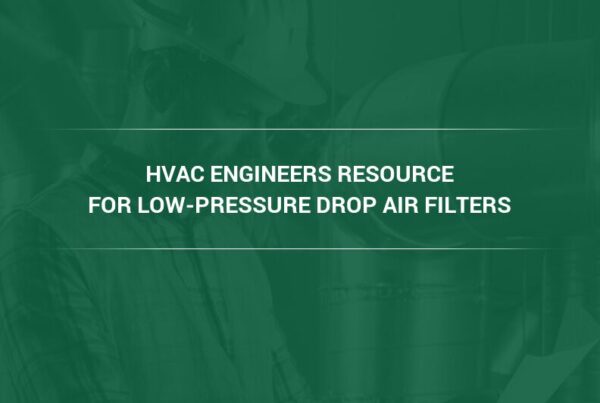Learn about the importance of furnace filters in heated homes, and how they play a vital role in maintaining clean and safe indoor air quality.
Furnace filters ensure that people inside their homes breathe safe and clean air after it has been heated or air-conditioned by the furnace and released from a vent. While furnace systems have significantly improved over the years, they still have no way of telling clean and dirty air apart—a furnace simply sucks in whatever air it can heat or cool and distributes it around the home or building. That same air could contain allergens, mold, mildew, particulate matter (PM), and all other kinds of airborne pollutants.
Furnace air filters are important because they ensure that any incoming airflow is cleaned and comes out as air that’s safe to breathe. And as awareness about the dangers of indoor air pollution rise, furnace filters have never been more important.
“During the 1970s, the global use of energy became an important political and economic topic due to the energy crisis that took place in that decade,” explains Camfil USA’s Charlie Seyffer, Manager of Marketing & Technical Materials for commercial air filters and 37-year ASHRAE member and active committee participant. “New building construction techniques were developed to decrease the amount of heat transfer through walls and windows and reduce the volume of air infiltration or exchange through walls, windows and doors. As a result, the buildup of contaminants and moisture inside buildings that had previously provided a healthy environment became an issue.”
How Furnace Filters Maintain Good Indoor Air Quality
The ability of furnace filters to maintain indoor air quality is based on the minimum efficiency reporting value (MERV) rating system. All furnace filters capture and remove airborne pollutants that pass through the furnace by using a fine mesh or fiber media. A filter’s MERV rating basically indicates how narrow the gaps are between the fibers of the filter media, which ultimately shows how effective it is at trapping airborne pollutants.
While it may seem that the best furnace filter for a home must have the highest possible MERV rating, this is not actually the case. In fact, this may end up doing more harm than good.
Higher MERV Ratings Not Necessary for Furnace Air Filters
It’s worth noting that tighter furnace air filters make it more difficult for air to pass through the furnace system. When airflow is sufficiently impeded, this can cause heat to build up in the furnace, causing temperatures to rise to dangerous levels.
When this happens, the furnace itself may be damaged, or worse, become a fire hazard. Air must be allowed through the furnace system smoothly, which means that the choice of filter media must not be too tight that it blocks airflow. In addition, another disadvantage of some high-MERV furnace filters is that they tend to become dirty much faster than lower-MERV filters, making constant maintenance a necessity. High quality, efficiency air filters are available for home application, and selection should be under the guidance of an air quality of air filtration professional. Seek a balance between filter efficiency and the product’s resistance to system airflow.
What Are HVAC Air Filters For?
Of course, many heating, ventilation, and air conditioning (HVAC) systems also come with air filters of their own. The difference, however, is that HVAC air filters are designed to protect the efficiency and performance of the HVAC unit itself, not the people in the indoor space. The paper filters that come with an air conditioner or furnace may be designed to capture dust and debris, but these are air particles that pose a danger to the machine, not people.
Instead, a true furnace air filter is designed to capture the airborne pollutants associated with health issues, such as:
- Lung cancer
- Asthma
- Allergies
- Emphysema
- Chronic bronchitis
Simply put, ordinary HVAC air filters are designed for HVAC systems, while high-efficiency furnace filters address the needs of people in indoor spaces.
Adding Home Air Filters into the Mix
Aside from installing furnace filters, it’s a good idea to have proper-strength home air filters in homes and buildings to remove airborne pollutants commonly found in indoor spaces. Air filters that use high efficiency filter media are especially effective at capturing fine particulate matter, also known as PM2.5, which refers to particles smaller than 2.5 microns in diameter.
Exposure to PM2.5 and other indoor air pollution such as volatile organic compounds (VOCs), radon gas, and chemical fumes have been linked to sick building syndrome—a common label to describe symptoms that include headaches, nasal irritation, eye irritation, and fatigue caused by spending time in a specific room or building.
Choosing Home Furnace Filters and Home Air Purification Systems
Concerns about indoor air quality in homes and buildings have generated interest in furnace filters and home air purification systems. As long as the problem of outdoor and indoor air pollution persists, these filter systems will always be important.
When looking for air filter systems, be sure to avoid bargain filters. If it’s too good to be true, it probably is. Approach a trusted air filter vendor or manufacturer—one who can guide you through the basics of air filtration. If possible, based upon your system’s capability, select a filter with a MERV of 13, or ISO ePM1 value. It will address most air quality situations.
At Camfil USA, we are committed to helping homeowners and business owners maintain great indoor air quality in their homes and buildings. Talk to our team to learn more about our air filters, or browse our extensive product catalog to order any of our air filter systems.
Media Contact:
Lynne Laake
Camfil USA Air Filters
T: 888.599.6620
F: Friend Camfil USA on Facebook
T: Follow Camfil USA on Twitter
Y: Watch Camfil Videos on YouTube



